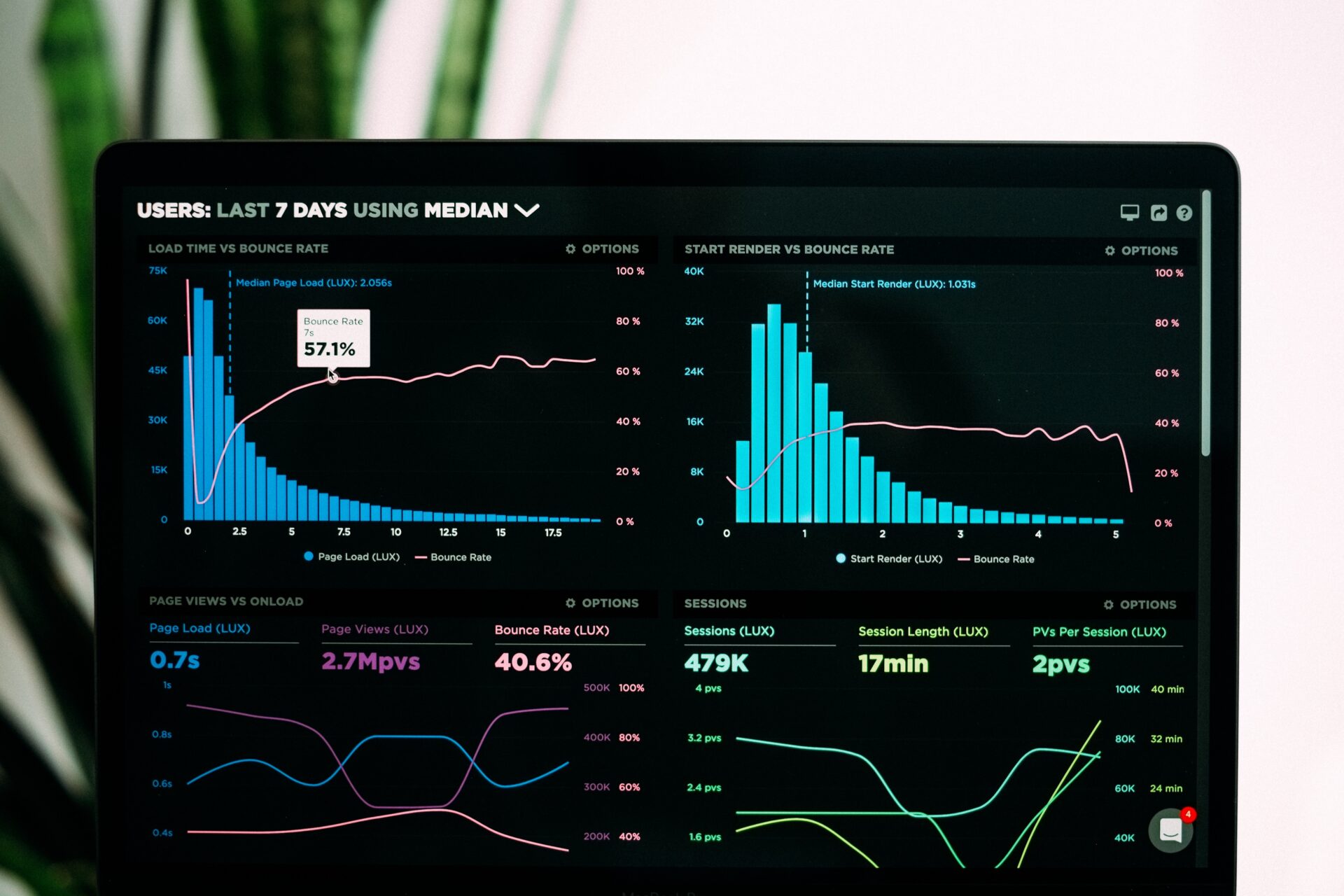[The Chinese version follows the English one. 中文版在底部]
Data, or big data, plays an important role in data-driven marketing. However, when facing a huge amount and accumulated raw data (especially unstructured ones), even with the help of analytic tools, sorting, tidying, and analyzing data manually is still time-consuming. Data processing automation is one of the solutions and the major trend in the future.
In the previous articles, we have introduced the benefits that data can bring to offline businesses. Today, let us take a look at how merchants combine data and technology to evolve in this data-driven marketing world.
A: Brand applications that use AI analytic technology
After establishing a brand app (such as a loyalty app or e-commerce app), the users will open an account and start using it once they are attracted and promoted successfully. The platform can help merchants to keep track of the customers’ personal information, search history, shopping cart items, or purchase history.

Image: https://databasedmarketing.medium.com/next-best-action-framework-47dca47873a3
With these data, brands may collect both individual and overall customer preferences, analyzing the attractiveness of different products, to provide better-personalized service. Like the above image, retail brands can observe the shopping pattern of a particular group of customers and compare them with other groups of customers or the overall customer. Then, the AI will automatically generate customized data-driven advertisements to provide suitable discounts and offers and enhance customer satisfaction and experience.
B: Use of Big Data to come up with big insights
In the world of big, our footprints in the digital world can all be tracked as different data that reflect our personal backgrounds or preferences. Nowadays, brands and advertisers may place programmatic advertisements via third-party data providers like data management platforms, social media, search engines, or website cookies, so that the digital ads can reach the right customer group on different websites.

Image: https://www.businessofapps.com/ads/programmatic/
However, along with the concerns of privacy issues, third-party data providers are becoming fewer, and it is important to have a data-collecting platform to gain first-hand customer data for brands.
Via acquiring and analysing big data, enterprises may fully understand the behaviour trends among consumers, and find out the reasons behind the trends, to come up with more effective and focused marketing strategies. Accurately predict the trends and future demands in the future and relocate your business position and data-driven marketing strategies to help improve your marketing share.
C: Real-time campaigns by Cloud Computing
With a huge amount of data, cloud computing technology can help us manage and analyze enormous consumer data easily, and swiftly save and process these data. Also, cloud computing service technology supports the integration of both online and offline, new and old data. Discovering new data and combining it with old data lets cloud computing compose faster and more well-rounded campaigns.
When we are having marketing campaigns, brands can perform real-time data acquisition and cloud analysis, immediately evaluating the campaign’s performance and effectiveness. With this, brands may adjust campaign settings and details anytime during the campaign, making it more suitable and focused on the current consumer demand, enhancing the marketing campaign. For example, when we are having a sales event, cloud computing can help us to track down the visitor amount of the e-commerce platform, and automatically activate extra services to make the customer browsing experience smoother. Or, they can calculate the ad version with more conversion rate, and adjust the ad version during the event to enhance impression and the performance of cost-per-ad-spent.
The funny part is, this is a cycle, brands can make use of their brand app or platform to collect user background and behavioral data, to figure out the overall major trend, and the general market insights. These insights involve the demand of customers, help schedule marketing campaigns, and enhance their customer experience and chances of sales. During these marketing campaigns, the reactions of customers will be recorded as data again, to reflect the campaign performance and the accuracy of the last data-analytic result. These data will become a new baseline for future marketing events, the data-driven loop goes on.
When the cycle keeps continuing, brands will collect more behavioral data of consumers (either overall or particular customers), increasing the accuracy of the analyzing result and conclusion made by the marketers. When the analytic result is more sophisticated, the insights behind the customer behavior will be more obvious, easy to locate, and accurate. With programmatic automation and cloud computing, the system may also suggest a “Next Best Action” based on the customer’s reaction to every campaign, performing a truly customized and agile shopping experience.
Motherapp’s loyalty app engine can become the digital joint between you and your customers. Feel free to click here and learn more, as well as contact us for professional consultation.
ABC營銷:數據驅動行銷的更進一步
數據,或者說大數據,在數據驅動行銷 (Data driven marketing) 中扮演著重要的角色。然而,面對數量龐大且持續累積的原始數據 (特別是非結構化的資料),即使在數據分析工具的協助下,單靠人手篩選、整理及分析仍然費時,自動化的數據處理程序是其中一種解決方法,也是未來的大勢所趨。
在上幾篇,我們為大家介紹了數碼轉型和妥善運用數據能為線下企業帶來的各種好處。今天,讓我們一起看看商家如何結合數據與科技,在數據驅動行銷的領域上持續向前邁進。
A:運用 AI 智能分析的品牌 App
在設立自家平台 (如會員App、網上商城等),成功吸引到客戶下載應用程式後,他們會註冊帳戶並開始使用。商家便可持續記錄及追蹤用家在平台上的行為數據:不論是註冊時所登記的個人背景資料;日常使用平台時的搜尋和瀏覽記錄;還是放入購物車或購買過的商品等,都能被平台的後台數據庫捕捉。

圖片來源: https://databasedmarketing.medium.com/next-best-action-framework-47dca47873a3
有了這些數據,品牌能收集到個體及整體顧客的偏好,分析不同產品對不同客戶群體的吸引力,以提供更準確的個人化服務予每一位會員。正如上圖,零售品牌能觀察到客戶的購物模式 (patterns),再對比其他/整體客戶的購物模式 ,由後台 AI 自動計算個人化廣告,為其使用者提供合適的優惠和產品推薦,提高客戶體驗和滿意度。
B:用大數據 (Big Data) 總結出「大」 觀點 (Big Insights)
大數據年代,人們在數碼世界上的行為足跡都能被記錄成為一列列的數據,反映個人的背景和偏好。現時,品牌及廣告代理商仍能透過使用如社交媒體、搜尋引擎、網站 cookies、數據管理平台 (Data Management Platform) 等第三方機構的服務來投放「程序化廣告」,讓數碼廣告可以精準接觸到不同網站上的目標客群。

圖片來源: https://www.businessofapps.com/ads/programmatic/
但是,隨著用戶關注隱私問題,來自第三方的用戶行為數據變得越來越少,企業自設的平台才是品牌日後客戶數據的主要來源。
通過掌握和分析大量數據,企業可更充分了解消費者的行為和趨勢,有助分析趨勢背後的原因,以便提供更有效及具針對性的營銷策略。更準確預測未來的市場趨勢和需求,相應調整自己的目標市場定位和行銷策略,幫助品牌提高市場占有率。
C:由雲端計算技術 (Cloud Computing) 引導的實時營銷活動 (Real-time Campaigns)
面對數量龐大的數據,雲端計算技術可以幫助企業更容易地管理和分析大量客戶資料,亦能更快速地存儲和處理這些資料。而且,雲端計算技術支援線上和線下、新與舊資料之間的無縫整合 (seamless integration),集合品牌數據庫內已分析過的觀點與新收集到的資料,雲端計算能為品牌快速制定更全面的營銷策略。
在進行營銷活動時,品牌可以應用雲端計算系統實時進行數據收集和雲端分析,即時評估活動效果和效益。在活動期間及時調整活動細節,以貼合顧客當前的需求,優化當前的營銷活動。舉個例子,在進行快閃促銷活動時,雲端計算系統能跟據網站人數的多少,自動開啟相應的網站伺服器數量,提升用戶體驗;又或者,它能統計出轉換率較高的廣告版本,在活動期間調整該版本的播放次數,提升廣告成效。
有趣的是,這其實是一個循環:品牌利用自家App/平台所收集到的用戶背景及行為數據能被行銷人員用作分析大體趨勢,總結出貼合顧客需要的市場見解;而那些見解幫助他們制定行銷策略和推廣計劃,提升顧客體驗的同時增加銷售機會;在行銷活動舉行期間,用戶對行銷活動中的行為反應又會再一次被平台收集成數據,顯示行銷策略的效果,反映是次數據分析的準確程度;這些數據又會成為下一次或日後制定新行銷活動的基礎⋯⋯循環不斷。
當這個循環不斷延續,品牌收集到愈多消費者 (不論是個別還是整體) 的行為數據,營銷人員在分析數據後總結出的結論就愈準確的,分析出的觀點亦會愈細緻,準確找出消費者行為背後想要帶出的訊息。利用程序自動化以及雲端計算技術,系統亦能基於個別消費者在每一次活動中的行為反應適時調整每一次活動的 “Next Best Action”,真正做到靈活、貼心的個人化消費體驗。
Motherapp 團隊開發的會員互動平台引擎能成為你和顧客之間的數碼化樞紐,歡迎 按此 了解更多,亦歡迎隨時與我們聯絡,進行一對一諮詢。
